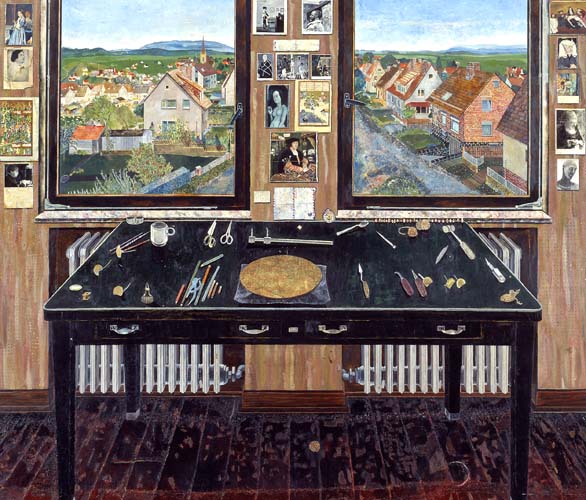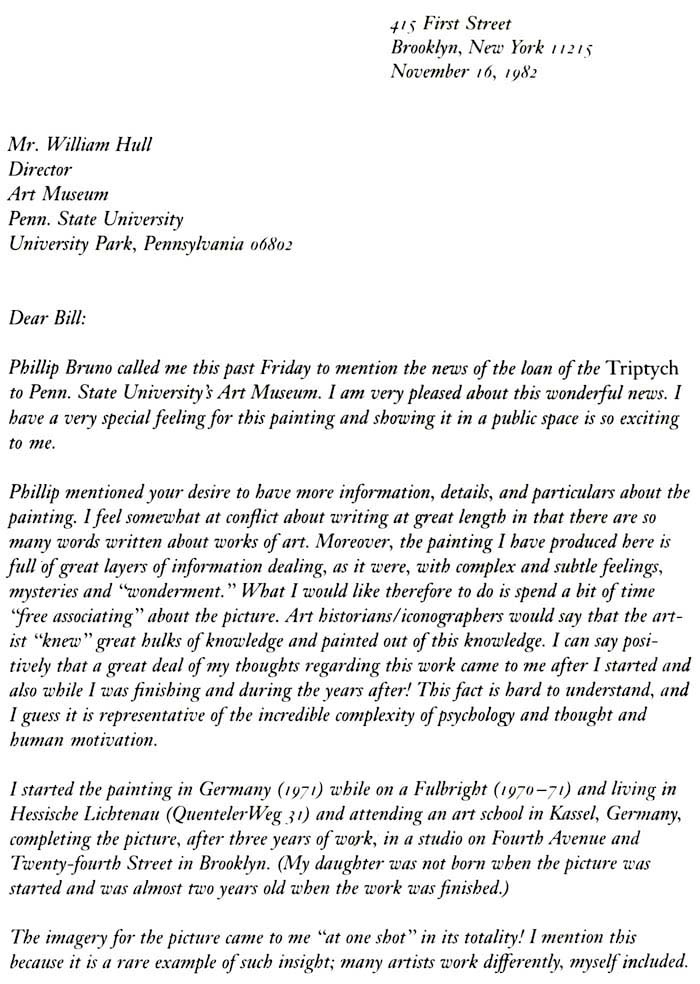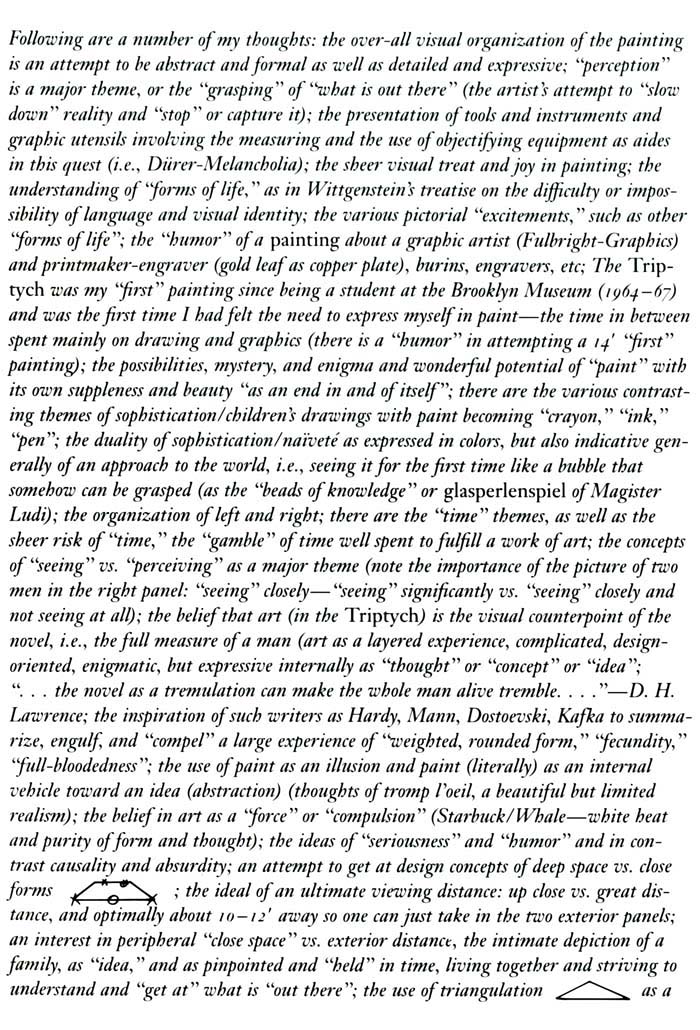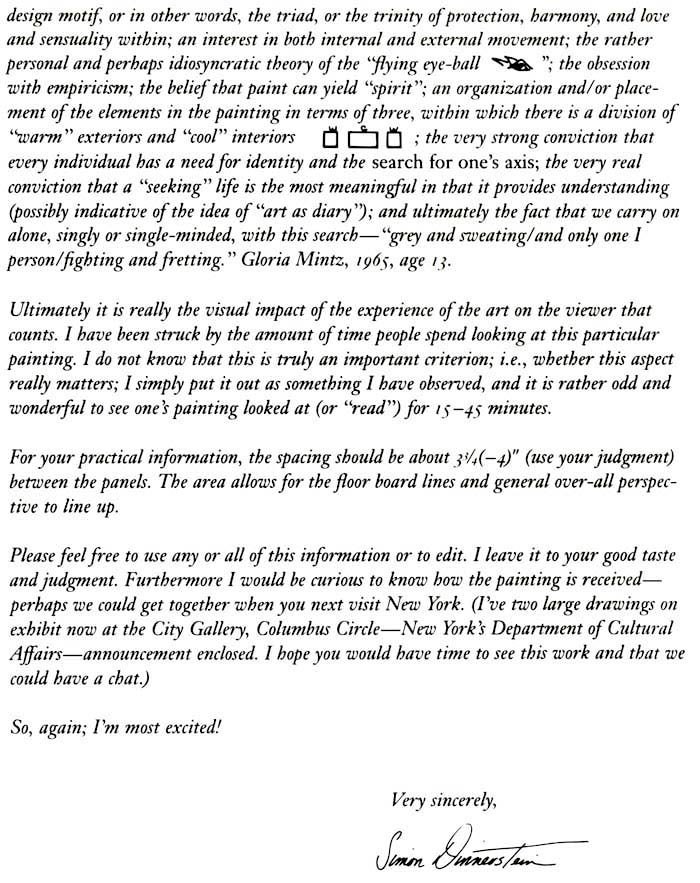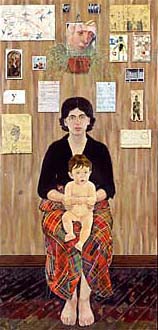 |
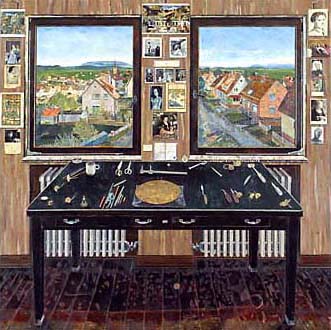 |
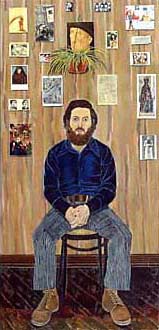 |
The Fulbright Triptych
“Complex originality and profound modernity of vision…I have come with the benefit of hindsight and experience to appreciate the subversive, even transgressive, nature of his art. Simultaneously conservative and progressive, ordinary yet surreal, humble and arrogant, Dinnerstein’s great painting is as old technically and aesthetically as it is structurally and conceptually new.”
Robert L. McGrath

“Simon Dinnerstein’s Fulbright Triptych is so symmetrically a harmony and so richly a composite of genres (family portrait, still life, landscape, and a collage that amounts to a complex poem) that its anomalies aren’t immediately apparent. He himself has pointed out that it’s a painting by a graphic artist (and his Fulbright project is there on the table, dead center, a copperplate engraving called Angela’s Garden), the baby on his wife’s lap had not yet been born (his daughter, Simone, now a concert pianist), and what we’re looking at is a serene Jewish family in a country that slaughtered six million Jews from 1933 to 1945 and among the fifty-seven images thumbtacked to the wall is an exit visa from Russia dated 1918. The Dinnersteins, like the Chagalls and Kandinskys, the Einsteins and Panofskys, move about in the turbulences of history.”
Guy Davenport
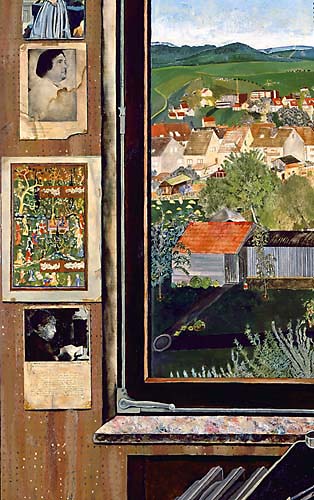
“His by now legendary bulletin board (really, a storyboard) is filled with items rendered with the meticulous and trompe l’oeil perfection of a Harnett or a Peto. Every autobiographical incident or detail is treated with an unwavering gaze. Here he takes his studio as the center of affection and attraction, with himself, his wife, and child grouped around the work table…Yet despite its obvious didacticism and cautious thematics, it is spellbindingly intense: a paradox that is a hallmark of the artist’s total production…The painting’s energy derives in part from the intrinsic rebelliousness of the project. Dinnerstein was awarded the Fulbright on the basis of a proposal having to do with a printmaking project, and in the end the most important work he did with it ran counter to the proposal. Dinnerstein refused to be stifled by either the stipulation of the grant or his own initial proposal.”
Albert Boime
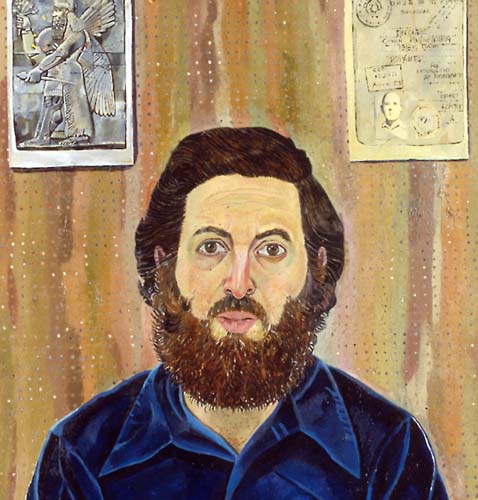
Simon Dinnerstein was born in Brooklyn in 1943, at a time when Germany was a foe to be overthrown at all costs. In 1970 that same Simon Dinnerstein went to Germany on a Fulbright Scholarship. Fulbrights for Germany were easier to get than Fulbrights for France, Britain or Italy, and Mr. Dinnerstein responded in any case to the ancient German tradition of exact plain statement in art.
Neither scale nor perseverance has anything to do with success in art and Mr. Dinnerstein’s triptych could be just one more painstaking failure. But it succeeds as an echo chamber, as a scrupulous representation of a suburb in the sticks, as a portrait of young people trying to make an honourable go of life and as an inventory of things that in 1975 give such people a sense of their own identity…. It deserves to go to a museum.
John Russell
